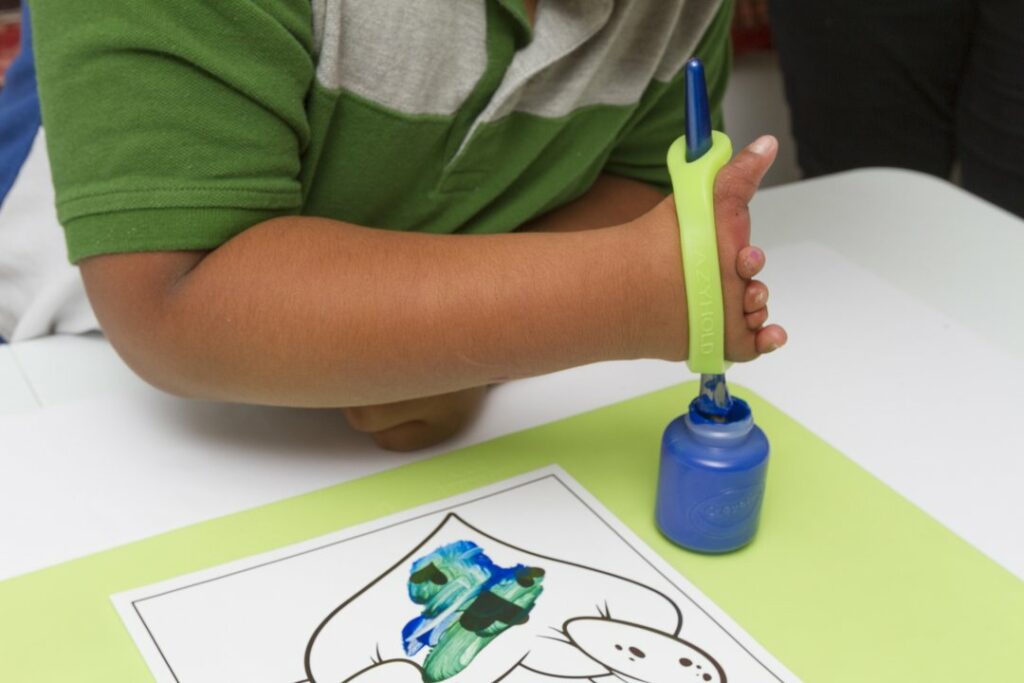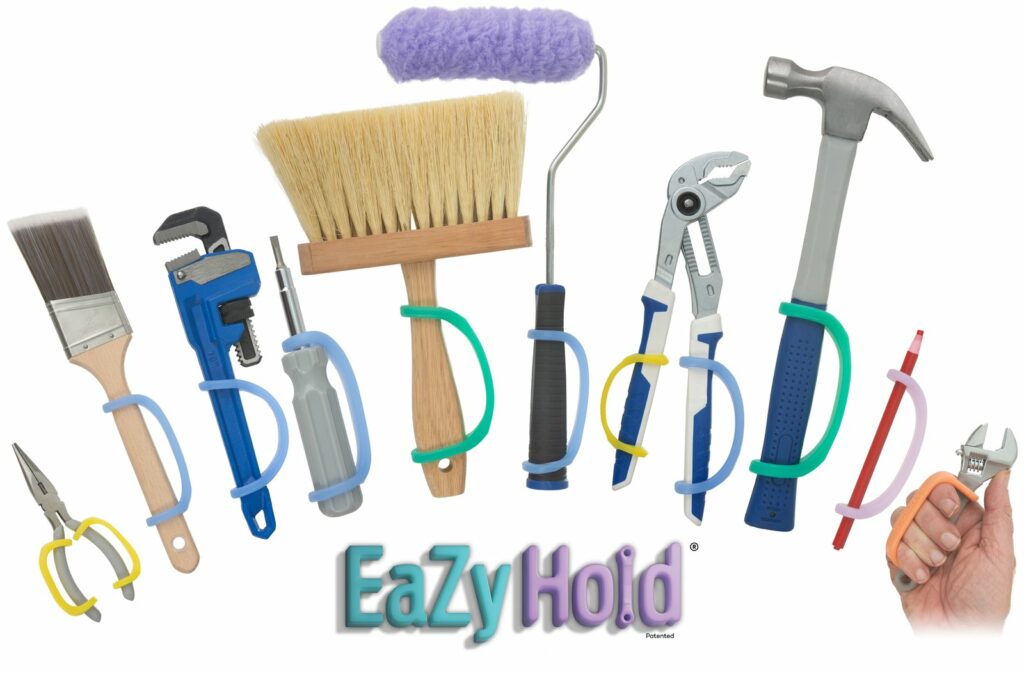EazyHold was invented by three sisters who understood how important it is to maintain independence through adversity. With EazyHold you can easily accomplish all your daily living activities with independence despite physical conditions or disabilities that might be impacting your grip strength. Their patented EazyHold design gives children and adults the ability to hold onto tons of items with ease.
EazyHold develops adaptive aids for people who have sustained disabilities due to factors like stroke, spinal cord injuries, cerebral palsy, Parkinson’s, limb loss ALs, and arthritis, to eat, drink, write, work and play independently. This product overcomes the social models of disability, as the problem is not with the person but poor designs sustained on everyday objects like cups, utensils, writing implements, toys, etc. EazyHold grip assist comes in multiple sizes, for infants to seniors, they attach securely to enable a comfortable grip on small to large objects.
Providing an inclusive learning environment
The concept of inclusion means that people/children with disabilities have the right to learn in typical classrooms, using the same curriculum, toys, and implements as their peers. Right from the start, Special Education Teachers understand the importance of providing low-tech, low-cost assistive technologies that are accessible and supportive of all students. Sometimes when one on one assistance is needed and there aren’t enough people to help – EazyHold overcomes the social model of disability by allowing you to supervise several children independently. One can be painting, another drawing, and still another playing a musical instrument without individual hand-over-hand assistance

The Individuals with Disabilities Education Act (IDEA) requires schools to provide children with disabilities the services and accommodations for each child’s unique needs, including Assistive Tech. Often the simplest things can make a huge difference to the student with individual needs. This is where EazyHold comes in since it is affordable and can improve function in children with both learning and physical disabilities, with a very little learning curve.
For Occupational Therapist
Occupational Therapy Tools for Hands and Limbs – Occupational Therapists specialize in assisting patients in locating appropriate adaptive equipment options for daily living activities. The goal is to improve the patient’s quality of life and allow them to return to a more independent way of life. The creative and usable design of EazyHold puts the tool in hand against the skin, for greater sensory perception and control, and for hospitals and therapy centers where hygiene and infection control are of primary importance, there is no comparison since EazyHold is dishwasher safe and can be sanitized post every use.

EazyHold also lets you feel the texture, shape, and size of the object for example The cold of a fork, or the warmth of a wooden spoon, the vibrating beat of a drumstick or a violin bow on strings, the brush stroke on the canvas, the pen on paper, feel the pressure necessary for delicate shaving or brushing teeth; touching on the Functional Solutions Model where innovation overcomes the limitations of a disability.
Conclusion
The future success of infants and toddlers with disabilities depends on the development of life skills; to self-soothe, self-feed, play with toys, go to school and participate in art and sports. All important markers and milestones in a child’s life. It’s amazing to see how simple the design of this tool is but the impact that it is creating is huge with multiple use cases. It definitely is a budget solution over expensive 3-D or robotic arms/hands which can be cumbersome, visually intrusive, and hard to access. Adding to what I previously stated Everyone should be given an equal opportunity and the opportunity to participate in daily activities without feeling special or out of place.
Bibliography
